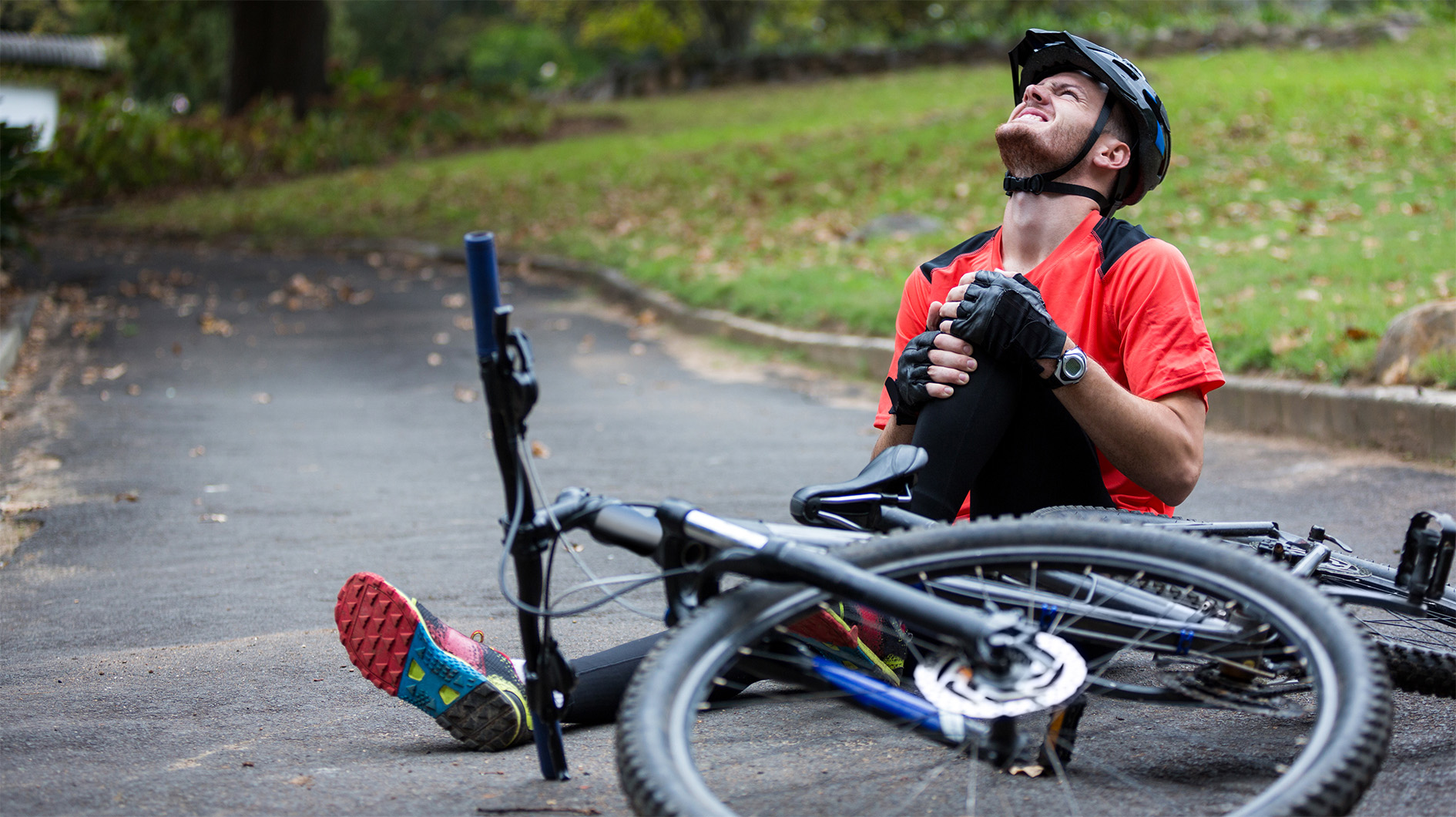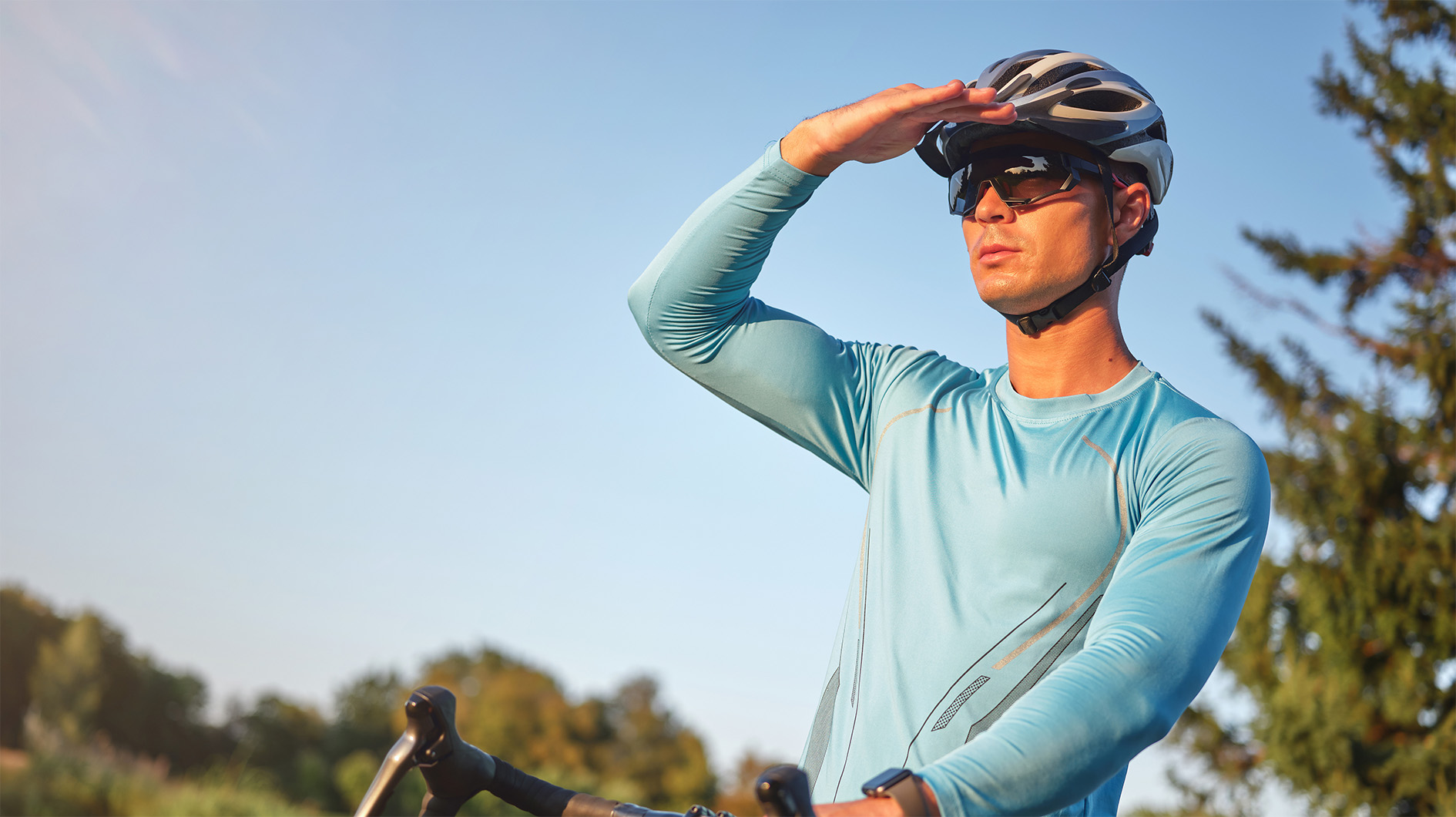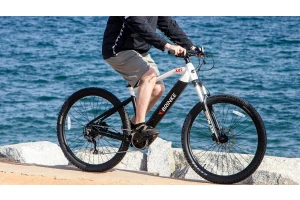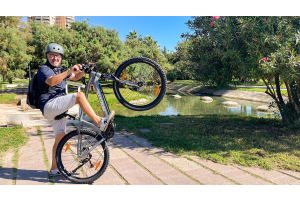Julio 22, 2024

How to deal with common injuries in outdoor cycling?
In outdoor sports, injuries are quite common, and cycling is no exception. However, do you know how to handle wounds properly? If you lack this knowledge, don’t worry. Next, let's learn about some methods for dealing with outdoor cycling injuries.
Knee Injury
Knee injuries are usually caused by two factors: The first is overexertion: This could be due to extended cycling time or poor body coordination while riding. Secondly, cold weather can lead to cold knees.
Tips:
-
Apply ice to the knee for about 20 minutes.
-
If the pain is at the front of the knee, raise the saddle by 2-3mm. If the pain is at the back, lower the saddle by 2-3mm. Alternate between sitting and standing while climbing to use different muscles.
-
Keep your knees warm. It's recommended to wear knee pads or long pants while riding, especially in cold weather.
Lower Back Pain
For beginners or those who haven't cycled in a while, experiencing lower back pain is normal but can be quite uncomfortable as the pain sometimes extends to the legs.
Tips:
During training, focus on these areas. The more you ride, the stronger your back muscles will become. A high-quality dual-suspension bike also helps to reduce lower back pain.
Neck Pain
Typically, extended periods with your neck outstretched can lead to fatigued and sore neck muscles.
Tips:
Maintain the correct posture while riding — don’t grip the handlebars too tightly, keep your elbows and shoulders relaxed, and ensure your upper body can move freely.
Regularly massage the neck muscles. If the pain persists, consult a chiropractor.
Abrasions
Abrasions usually result from external factors such as riding too fast, lack of attention, or brake failures.
Tips:
Basic treatment involves cleaning the wound with medical disinfectant and iodine. To keep the wound clean, wear loose clothing. Depending on the severity, a tetanus shot might be necessary.
Skin Inflammation
Friction between the skin or with clothing, as well as exposure to pollen, can cause skin inflammation.
Tips:
Maintain personal hygiene and disinfect your body and skin regularly.
Apply Vaseline or tea tree oil on areas prone to inflammation for lubrication and protection before heading out.
Choose appropriate clothing, preferably long sleeves. Wearing professional cycling apparel reduces skin friction. If it’s warm, opt for thin, loose clothing.


Sunburn
Male cyclists often overlook sunburn. However, prolonged exposure to strong UV rays can easily cause sunburn (inflammation, damage, etc.).
Tips:
Apply sunscreen on exposed body parts like the face, nose, arms, neck, ears, and uncovered legs before departure.
Wear leg and arm sleeves.
Calamine lotion and ice packs can help soothe sunburn. Consistently use high-quality moisturizer to relieve symptoms and keep the sunburned area hydrated.
If there are scars, cover them with clothing or other protective gear.
Saddle Sores
These commonly occur between the legs due to friction and pressure from the saddle, sometimes exacerbated by ingrown hairs. When infected with sweat, these sores can become pustular.
Tips:
Invest in high-quality cycling shorts that reduce skin friction.
After cycling, take a shower and change into clean, dry clothes immediately.
If you develop saddle sores, allow them to mature and then drain the pus before disinfecting. Remove infected hair with warm wax to prevent worsening, but it’s best to seek medical treatment.
Eye Injuries
Why is wearing cycling glasses emphasized? It's to protect eyes from elements like sunlight, insects, plants, dust, stones, and mud.
Tips:
Wear cycling glasses (consider those with interchangeable lenses or auto-adjusting lenses).
If mud splashes around, don't rely solely on glasses; turn your face to the side to prevent mud from entering your eyes.
Fractures
Fractures typically result from severe cycling accidents. Although rare, it's good to know how to handle them.
Tips:
If able to manage the wound, cover it with a clean cloth, then bandage it to stop bleeding. Use a splint or bandage to immobilize the injured part.
Stay calm and seek medical help; avoid further impact on the injured area while waiting for assistance.
Rib Pain
Sharp, sudden pain in the ribs is usually due to the diaphragm pulling upwards against the ribcage.
Tips:
Warm-up before exercising.
While riding, avoid hunching over the handlebars. Keep your back straight and chest open to give the diaphragm enough movement space.
Adjust your cycling speed to a level your body can handle.
Heatstroke
A major challenge for summer cycling is the scorching sun. The body's inability to control temperature through sweating can lead to heatstroke.
Tips:
Move the person to a cool place, remove clothing, and wrap them in a cloth soaked in cold water to lower their body temperature. Offer saltwater if the person is conscious.
Cyclists should carry some medications for heat stroke to prevent heatstroke.
Choose to ride in the early morning or evening. Don't push yourself if your body can't handle the heat.
Sprains
Incorrect cycling posture or uneven roads can lead to joint sprains from excessive force.
Tips:
Bandage the limb and elevate it to reduce swelling, internal bleeding, and inflammation.
Use anti-inflammatory cream or physical therapy like ultrasound or movement therapy.
Gentle movement of the injured area aids recovery and prevents muscle atrophy and stiffness.
Hand Pain
Rough roads, excessive impact force, overextended arms, or gripping the handlebars too tightly for extended periods can cause pain in the hands (including wrists).
Tips:
Install shock absorbers and handlebars, and wear cycling gloves.
Frequently release and shake hands during the ride.
Grip the handlebars with the rear part of the hand, avoiding the sensitive area between the thumb and index finger.
Achilles Tendon Pain
If the saddle is too high, you'll have to use your toes to reach the pedals, leading to overexertion and tendinitis.
Tips:
Adjust the saddle height. When cycling, keep your foot and ankle at a 90-degree angle, and use different parts of the foot to avoid straining the tendons, especially on long rides.
Back Pain
Improper cycling posture, especially on bumpy terrain, leads to back pain when the spine doesn't absorb shocks properly.
Tips:
Choose a bike of the right size and maintain the correct cycling posture, keeping your back arched and ensuring the hip and shoulder joints don’t sag. This slight arching helps absorb shocks and is harmless.


 English
English  Deutsch
Deutsch  Deutsch
Deutsch 



Validate your login